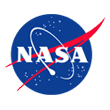
Frequently Asked Questions
What is SEEC?
The Sellers' Exoplanet Environments Collaboration (SEEC) is a network of NASA and external scientists solving questions related to exoplanets and the systems in which they reside. To achieve this, SEEC provides multiple avenues of support to its members: communication resources like Slack, symposiums, and seminars. SEEC and its members host training workshops on software and collaboration workshops to explore new links between projects. SEEC also provides financial support to teams through competitive grants applied through NASA's Internal Scientist Funding Model (ISFM).
Why Exoplanet Research?
As of 2022, there are over 5,000 confirmed exoplanets. By the time you are reading this there will have been even more discovered. Each exoplanet offers us a unique laboratory floating in space. It will be a long time before we are ever able to visit one of these worlds, but we can learn a lot about them by observing with space- and ground-based telescopes. What we learn from exoplanets can teach us more about our own Solar System and home: how planets formed, how Earth got its water, how life started and evolved, is life common-place, what will happen in the future? All of these questions are difficult to answer in a vacuum, luckily extra-solar systems allow us to explore these and other questions just by looking through telescopes.
Why Study Exoplanet Environments Now?
The first exoplanet was discovered 30 years ago and we now know of over 5,000 with more candidates being confirmed each day. This explosion in the field has led to investments in ground- and space-based telescopes like the TESS satellite and the Extremely Large Telescope in Chile. These new facilities will be able to uncover secrets that we could not have even imagined back when the first exoplanet was discovered. However, it will take a lot of work, creativity, and scientific know-how to make sense of all this new data. New scientific models will need to be theorized and then put to the test. Huge data sets will have to be examined using machine learning. This will require the efforts of 1,000s of scientists, engineers, and programmers. Even more educators, writers, and artists will then be needed to take these discoveries and transform them into a medium that the general public can learn from and be inspired by. One can only imagine what this field will look like 30 years from now.
Can I Join SEEC?
Collaboration is literally in our name! Our SEEC researchers are always looking for new scientists to work with. The best way to get involved is to look through our list of currently and previously supported projects. If you see something that looks interesting then consider reaching out to a SEEC researcher that is working on that topic and mention that you are interested in working with them on a future SEEC project. Be aware that SEEC funding can only be given to certain U.S. institutions.
How are SEEC Projects Chosen?
SEEC leadership puts out a call for projects on an annual basis. Teams of scientists and engineers put together proposals which are then reviewed by their peers within SEEC. These proposals are ranked by merit, relevance, and community benefit; the top ranked projects are chosen for 1 to 3 year-long periods. If you are a Goddard scientist and would like to learn how to submit a project to SEEC please find the latest information here.
Contact
NASA Official : Prabal Saxena
Media Contact : Claire Saravia
Web Curator : Kristen Killingsworth
